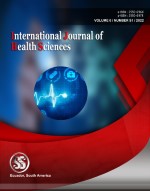Comparison between Non-obstructive versus obstructive coronary artery disease patients with acute coronary syndrome
Keywords:
3 Non-obstructive, obstructive coronary artery disease, acute coronary syndromeAbstract
Background and aim: Differences in prognosis and baseline clinical presentation have been documented among patient with acute coronary syndrome and coronary artery disease with obstructive (ObCAD) or nonobstructive arteries (NObCAD), but the rates of events largely varied across single studies, the present study aimed to compare the clinical profile, in-hospital and 3-month outcomes major adverse cardiovascular events (MACEs) of Acute Coronary Syndrome (ACS) patients with Non – Obstructive Coronary Diseases (NOCAD), versus Obstructive Coronary Diseases (OCAD). Patients and methods: This prospective observational study included 200 consecutive patients admitted with the diagnosis of ACS to Coronary Care Unit (CCU) at Al- Azhar University hospital Assiut and Sohag Specialized Cardiac and Digestive System Center. Results: There was statistically significant increase in patients suffered from common complication of ACS during 3 months follow up in group B (CAD) than group A (NOCAD).There was statistically significant between number of vessels in both groups with heart failure, and recurrent angina pain complications. Conclusion: Female sex, young age, less diabetic patients, less smoking, less ST segment changes, elevations in peak troponin levels were all associated with coronary angiography showing no significant stenosis.
Downloads
References
Puymirat E, Simon T, Cayla G, Cottin Y. Biomarkers in relation to the effects of ticagrelor in comparison with clopidogrel in non-ST-elevation acute coronary syndrome patients managed with or without in-hospital revascularization: a substudy from the Prospective Randomized Platelet Inhibition and Patient Outcomes (PLATO) trial. Circulation, 2017; 129:293_303.
Minha S, Shmuel G, Marco A, Natalie G. (Characteristics and Management of Patients with Acute Coronary Syndrome and Normal or Non-Significant Coronary Artery Disease: Results From Acute Coronary Syndrome Israeli Survey (ACSIS) 2004-2010, 2014; 26(8).
Reynolds, H. R. Mechanisms of myocardial infarction without obstructive coronary artery disease. Trends in cardiovascular medicine, 2014; 24(4): 170-176.
Moreira N, Ferreira MV, Soares F, Santos B, Miranda A, Gonçalves L, et al. Suspected coronary artery disease and myocardial infarction with normal coronary angiography: A heterogeneous but benign condition?. Revista Portuguesa de Cardiologia, 2013; 32(3), 205-210.
Planer D, Mehran R, Ohman EM, White HD, Newman JD, Xu K, et al. Prognosis of patients with non-ST-segment-elevation myocardial infarction and nonobstructive coronary artery disease: propensity-matched analysis from the Acute Catheterization and Urgent Intervention Triage Strategy trial. Circulation. Cardiovascular interventions, 2014; 7(3), 285–293. https://doi.org/10.1161/CIRCINTERVENTIONS.113.000606
Gaetano M, Keith A, Jennifer A, Giugliano R, Tricoci P, Reynolds H, et al. Outcomes among non-STsegment elevation acute coronary syndromes patients with no angiographically obstructive coronary artery disease: observations from 37,101 patients. E Heart J: Acute Cardiovascular Care, 2013; (1) 37-45.
OGara PT, Kushner FG, Ascheim DD. guideline for the management of STelevation myocardial infarction: areport of the American College of Cardiology Foundation/American HeartAssociation Task Force on Practice Guidelines. J AmColl Cardiol, 2013; 61:e78.
Chokshi NP, Iqbal SN, Berger RL, Hochman JS, Feit F, Slater JN, et al. (2010). Sex and race are associated with the absence of epicardial coronary artery obstructive disease at angiography in patients with acute coronary syndromes. Clinical cardiology, 2013; 33(8), 495-501.
Sivabaskari P, Tracy A, Rachel P, Tavella R, Beltrame JF. Systematic review of patients presenting with suspected myocardial infarction and nonobstructive coronary arteries. Circulation, 2015; 131:861-870.
Abdu FA, Mohammed AQ, Liu L, Xu Y, Che W. Myocardial infarction with nonobstructive coronary arteries (MINOCA): a review of the current position. Cardiology, 2020; 145(9), 543-552.
Berbesh MZ, Roza AE, Allam SR, Ali AM, Mohamed YA, Hablus WR. Predictors and Outcomes of Acute Coronary Syndrome in Patients with Insignificant Coronary Artery Disease, 2018.
Jánosi A, Csató G, Pach FP, Pápai G, Erdős G, Andréka P. Analysis of pre-hospital delay time of patients with myocardial infarction. Orvosi Hetilap, 2019; 160(1), 20-25.
Seung, D. Amylose in starch: Towards an understanding of biosynthesis, structure and function. New Phytologist, 2020; 228(5), 1490-1504.
Ying XG, Rahim K, Sabiha G, Diana G. MI with Non-obstructive Coronary Artery Presenting with STEMI: A Review of Incidence, Aetiology, Assessment and Treatment) , European Cardiology Review, 2020; 15:e20
Abdelmonem YY, Bakr AA, El-Hossary HG, Ghany MM. Patients with non-obstructive coronary artery disease admitted with acute myocardial infarction carry a better outcome compared to those with obstructive coronary artery disease. The Egyptian Heart Journal, 2017; 69(3), 191-199.
Larsen AI, Nilsen DW, Yu Jennifer, Mehran R, Nikolsky E, Lansky AJ. Long-term prognosis of patients presenting with ST segment elevation myocardial infarction with no significant coronary artery disease (from the HORIZONS-AMI trial). American Journal of Cardiol; 111(5):643–8- (2013).
Carmine P, Borejda X, Grazia M, Massimiliano F, Maria E, Fragassi G. Non-obstructive Versus Obstructive Coronary Artery Disease in Acute Coronary Syndrome5(12): 185 ( 2016) .
Juarez RB, Peter C, Heather JR, Jack V, Lee DS. Importance of Non-obstructive Coronary Artery Disease in the Prognosis of Patients With Heart FailureJun, 2019; 7(6):493-501.
Published
How to Cite
Issue
Section
Copyright (c) 2022 International journal of health sciences

This work is licensed under a Creative Commons Attribution-NonCommercial-NoDerivatives 4.0 International License.
Articles published in the International Journal of Health Sciences (IJHS) are available under Creative Commons Attribution Non-Commercial No Derivatives Licence (CC BY-NC-ND 4.0). Authors retain copyright in their work and grant IJHS right of first publication under CC BY-NC-ND 4.0. Users have the right to read, download, copy, distribute, print, search, or link to the full texts of articles in this journal, and to use them for any other lawful purpose.
Articles published in IJHS can be copied, communicated and shared in their published form for non-commercial purposes provided full attribution is given to the author and the journal. Authors are able to enter into separate, additional contractual arrangements for the non-exclusive distribution of the journal's published version of the work (e.g., post it to an institutional repository or publish it in a book), with an acknowledgment of its initial publication in this journal.
This copyright notice applies to articles published in IJHS volumes 4 onwards. Please read about the copyright notices for previous volumes under Journal History.
















